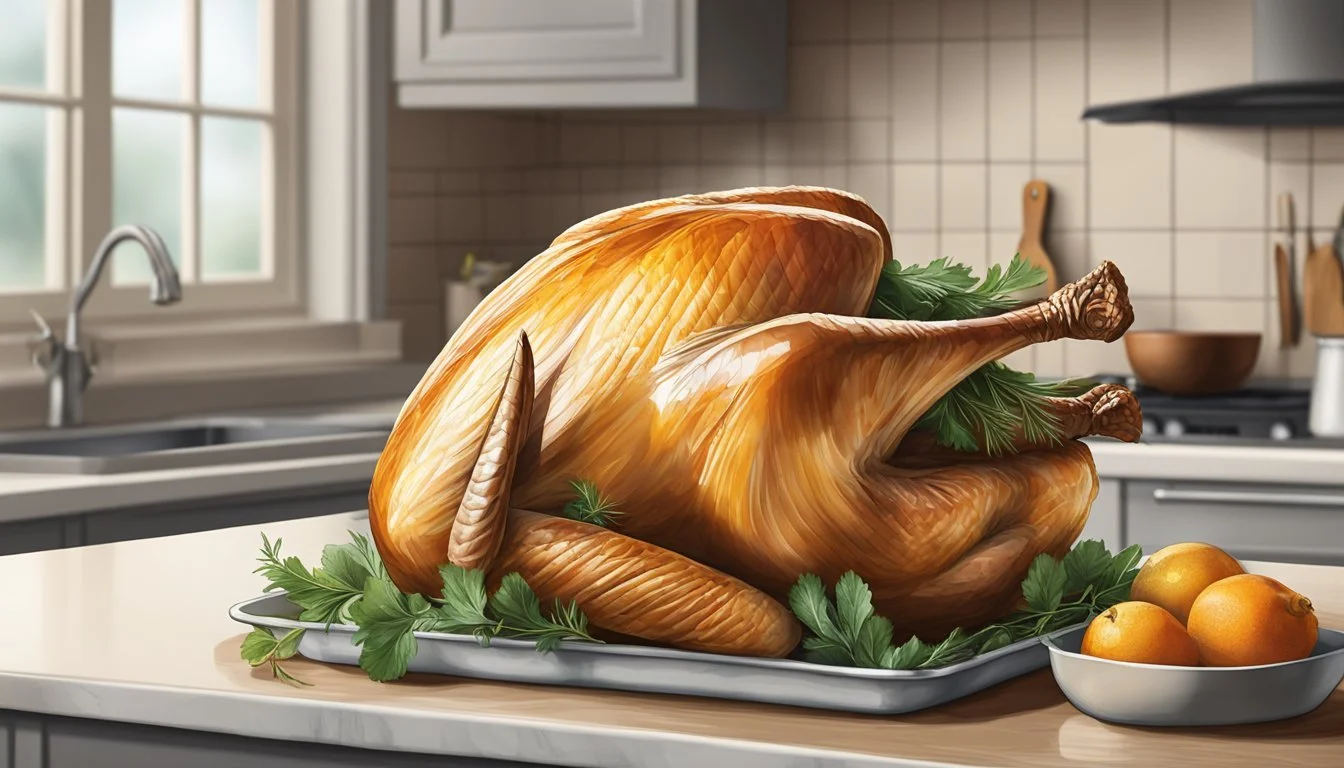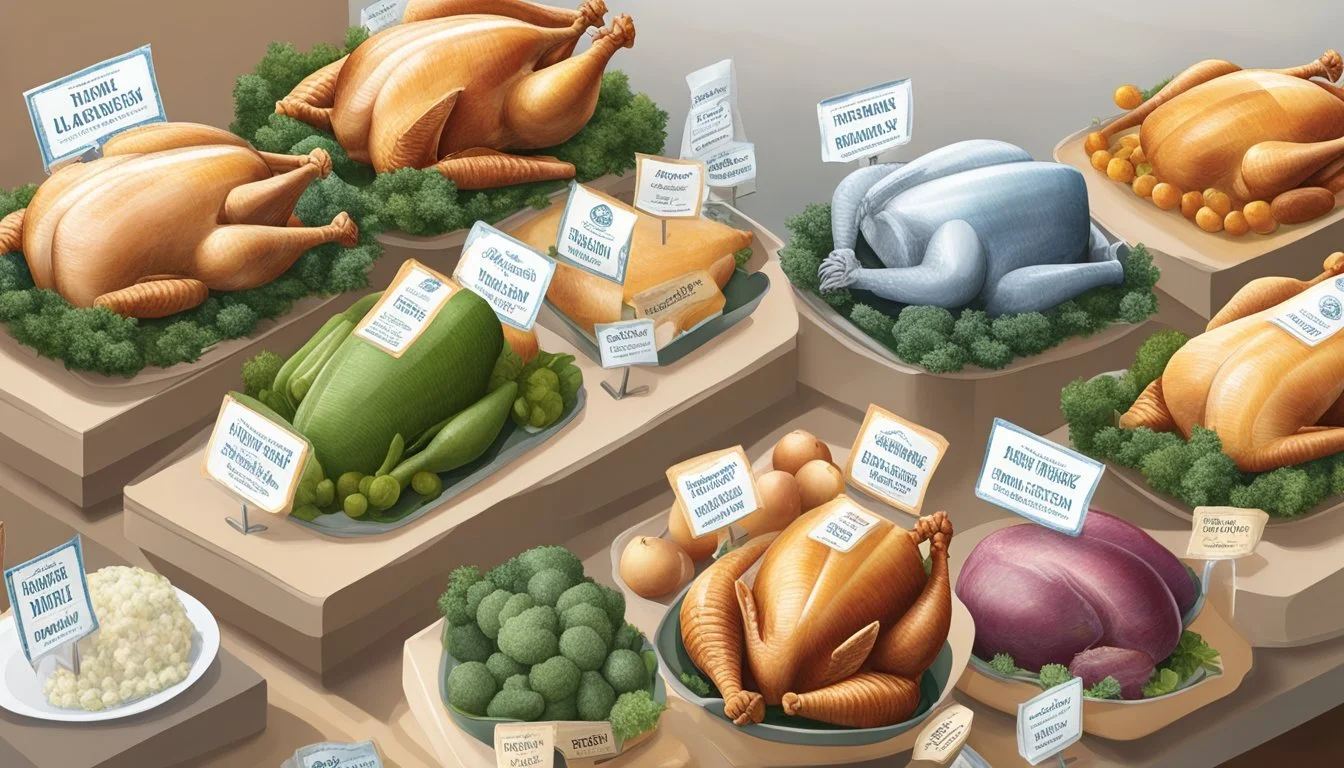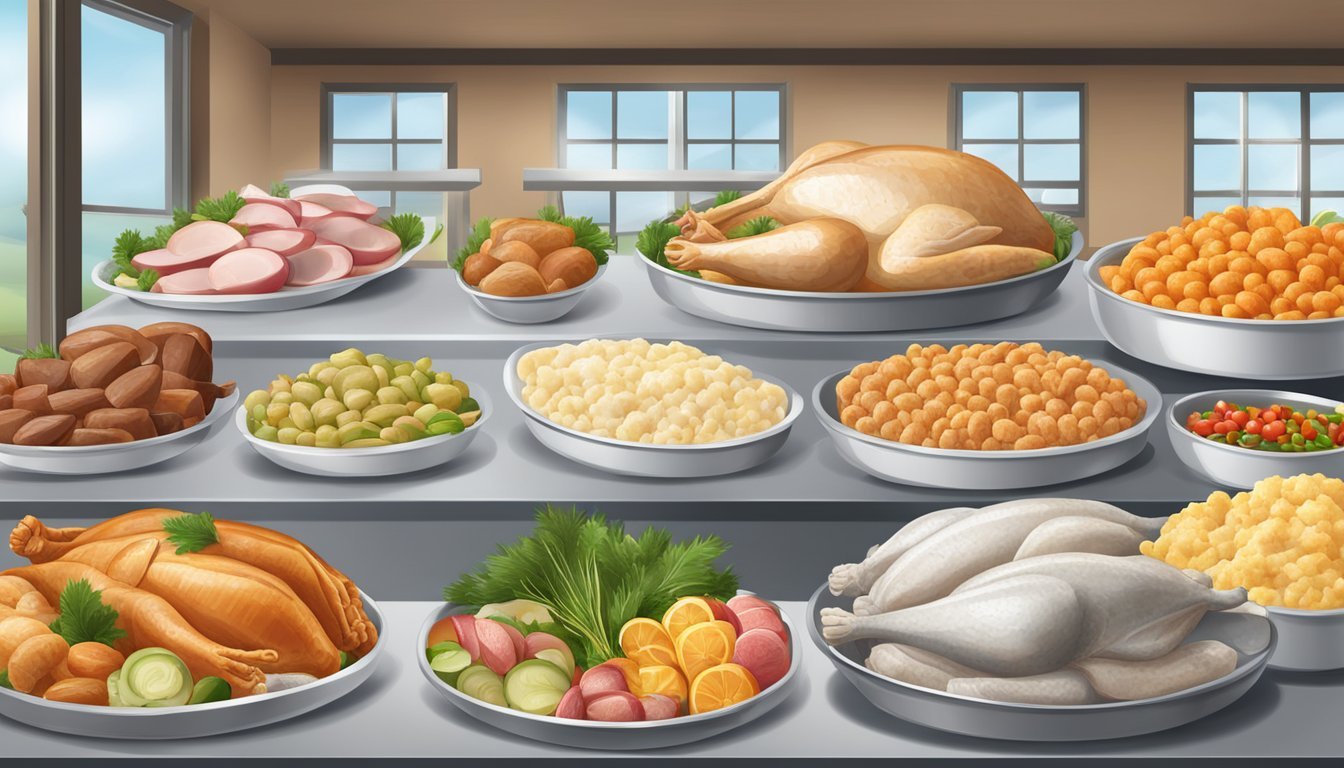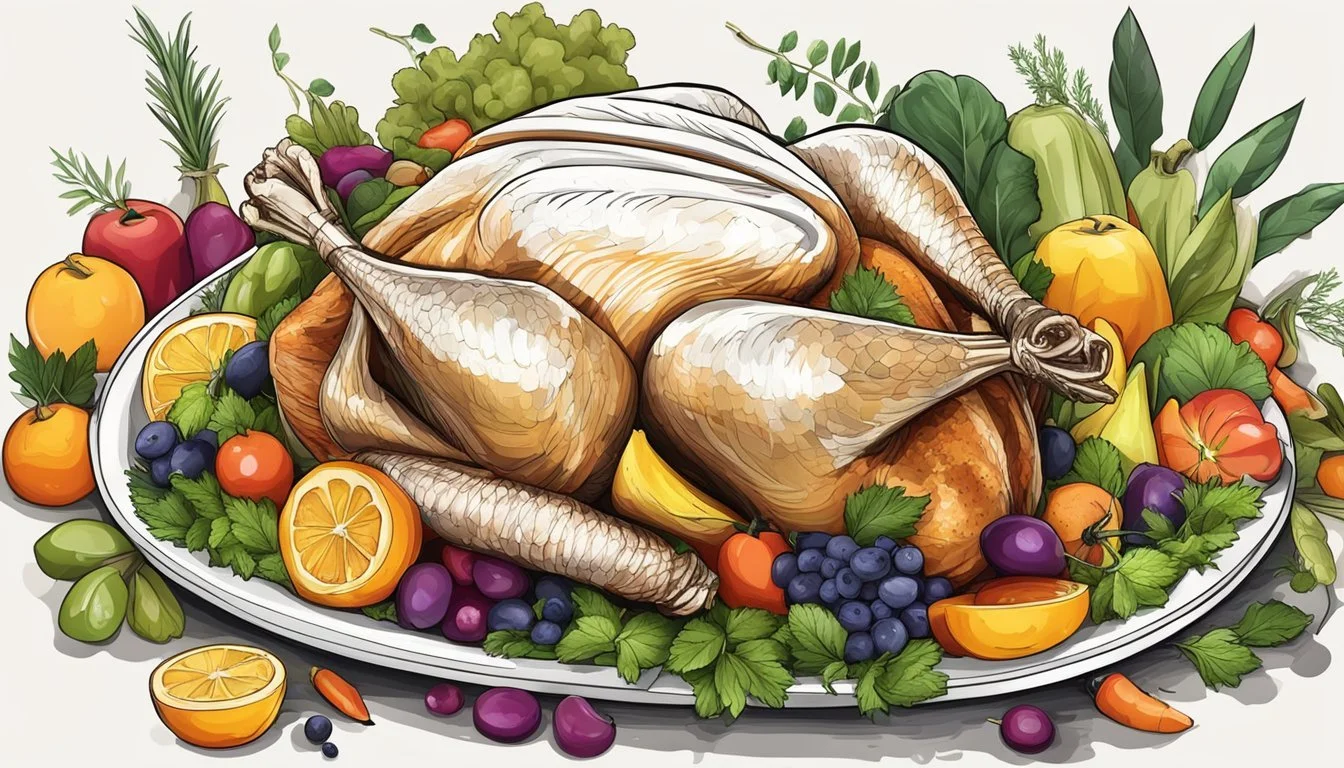Frozen or Fresh Turkey: Which is the Better Choice for UK Consumers?
As Christmas approaches, many UK households face the dilemma of choosing between frozen and fresh turkeys for their festive feast. Both options have their merits, and the decision often comes down to personal preferences, budget constraints, and convenience factors.
Fresh turkeys typically offer superior taste and texture, with juicier meat and a slightly gamey flavor due to their natural diet and processing methods. However, they require more careful handling and have a shorter shelf life, necessitating purchase closer to the cooking date. Frozen turkeys, on the other hand, provide convenience and flexibility, allowing for early purchase and storage until needed.
Cost considerations also play a role in the decision-making process. Fresh turkeys, especially those from local farms or specialty butchers, tend to be more expensive than their frozen counterparts. Supermarkets offer a range of options at various price points, with some providing high-quality fresh turkeys that rival those from independent sources.
Choosing the Right Turkey for You
Selecting the perfect turkey involves considering freshness, budget, farming methods, and size requirements. Each factor plays a crucial role in ensuring a delicious centerpiece for your festive meal.
Understanding Fresh vs. Frozen Turkeys
Fresh turkeys offer immediate cooking convenience but require prompt use. They typically have a juicier texture and more pronounced flavor. Frozen turkeys provide flexibility in purchase timing and storage. They can be bought well in advance and stored until needed.
Fresh turkeys need refrigeration and should be cooked within 1-2 days of purchase. Frozen turkeys require thawing, which can take several days depending on size. Both options can yield excellent results when cooked properly.
Quality is comparable between fresh and frozen turkeys when sourced from reputable suppliers. The choice often comes down to personal preference and logistics.
Budget Considerations for Turkey Purchases
Fresh turkeys generally cost more than frozen ones due to storage and transportation requirements. Prices fluctuate based on seasonal demand, with peaks around holidays.
Frozen turkeys are often more budget-friendly and can be purchased during sales for additional savings. Some stores offer promotions on turkeys with a minimum purchase of other groceries.
Turkey Type Price Range (per kg) Fresh £5 - £12 Frozen £3 - £8
Organic and specialty turkeys command premium prices. Planning ahead and comparing prices across different retailers can help secure the best deal.
Different Types of Turkey: Organic, Free-Range, and Bronze Feathered
Organic turkeys are raised without synthetic pesticides or fertilizers. They often have a richer flavor but come at a higher price point.
Free-range turkeys have access to outdoor areas, potentially resulting in more flavorful meat. They typically have a better quality of life compared to conventionally raised birds.
Bronze turkeys are known for their distinctive feather color and are often considered a heritage breed. They tend to have a more robust flavor and firmer texture than white-feathered varieties.
Each type offers unique characteristics:
Organic: No artificial additives
Free-range: More natural lifestyle
Bronze: Traditional breed with rich taste
Sizing Your Turkey: Weight and Serving Guides
Choosing the right size turkey ensures sufficient servings without excessive leftovers. A general rule is to allow 500g per person for a generous serving with leftovers.
For a smaller gathering, consider a turkey crown or breast instead of a whole bird. This reduces cooking time and waste.
Serving guide:
4-6 people: 3-4 kg turkey
8-10 people: 5-6 kg turkey
12-14 people: 7-8 kg turkey
Remember to check your oven size to ensure the turkey fits comfortably. Allow extra weight if you plan to stuff the bird or desire more leftovers.
Purchasing Your Turkey
Selecting the right turkey and timing your purchase are crucial for a successful holiday meal. UK supermarkets offer a range of options, while strategic shopping can help you take advantage of seasonal sales.
Supermarket Options: M&S, Aldi, Waitrose, and More
M&S is known for its high-quality turkeys, offering both fresh and frozen options. Their free-range birds are particularly popular for their flavour and ethical sourcing.
Aldi provides budget-friendly choices without compromising on taste. Their frozen turkeys are often competitively priced and receive positive reviews from customers.
Waitrose caters to those seeking premium options. They stock a variety of turkey breeds, including organic and heritage varieties, appealing to discerning shoppers.
Other major supermarkets like Tesco, Sainsbury's, and Asda also carry a wide selection of turkeys. These range from basic frozen birds to higher-end fresh options.
When to Buy: Planning for December Sales
Many supermarkets offer pre-ordering services for fresh turkeys, typically opening in November. This ensures availability and allows customers to secure their preferred size and type.
December often brings promotional offers on turkeys. Sales usually start mid-month and intensify closer to Christmas. Frozen turkeys are frequently discounted earlier in the month.
Last-minute shoppers may find significant discounts on fresh turkeys in the days immediately before Christmas. However, selection may be limited at this point.
For those seeking frozen turkeys, purchasing earlier in December provides more options and potentially better prices. Frozen birds can be stored for months, offering flexibility in purchase timing.
Preparation and Safety
Proper preparation and safety measures are crucial when handling turkeys. Thawing frozen birds requires careful planning, while fresh turkeys need specific storage and handling. Understanding self-basting and natural diets impacts preparation methods.
Thawing Your Frozen Turkey Safely: Defrosting Time and Techniques
Defrosting a frozen turkey requires patience and proper planning. A whole turkey needs 24 hours of thawing time for every 2-2.5 kg in the refrigerator. For a 5 kg bird, allow 2-3 days.
Never thaw a turkey at room temperature, as this encourages bacterial growth. Instead, use these safe methods:
Refrigerator thawing (recommended)
Cold water thawing (faster, but requires more attention)
Microwave thawing (for smaller turkeys)
After thawing, cook the turkey within 24 hours. Keep the bird in its original wrapping and place it on a tray to catch any drips during defrosting.
Preparing Fresh Turkeys: Tips and Tricks
Fresh turkeys require less preparation time but need careful handling. Store fresh turkeys in the refrigerator at 4°C or below. Use within 1-2 days of purchase or by the use-by date.
Before cooking:
Remove giblets from the cavity
Rinse the turkey inside and out with cold water
Pat dry with paper towels
Avoid washing the turkey in the sink to prevent cross-contamination. Instead, pat it dry and season as desired. For food safety, use separate cutting boards and utensils for raw poultry.
Understanding Self-Basting and Natural Diets
Self-basting turkeys are injected with a solution of broth, butter, or seasonings. This process adds flavour and moisture but can alter the natural taste of the bird. These turkeys often require less preparation and basting during cooking.
Turkeys raised on natural diets may have a more distinct flavour. They typically contain no additives or preservatives. When preparing these birds:
Consider brining to enhance moisture retention
Use herbs and spices to complement the natural flavour
Baste regularly during cooking to maintain juiciness
Natural diet turkeys may cook faster than conventional ones, so monitor internal temperature closely. Always ensure the thickest part reaches 75°C before serving.
Seasonings and Stuffing
Selecting the right seasonings and stuffing enhances the flavor of a turkey, transforming it into a memorable centerpiece. Traditional ingredients and innovative combinations offer options to suit various tastes.
Traditional and Festive Stuffing Choices
Sage stands out as a classic herb in turkey stuffing, imparting a distinctive earthy flavor. Many cooks combine it with thyme, parsley, and marjoram for a traditional blend. Onions and celery provide a savory base.
For a festive twist, cranberry stuffing adds tartness and color. It pairs well with chestnuts or apples for a sweet-savory balance. Some recipes incorporate sausage or bacon for extra richness.
White bread cubes form the foundation of many stuffings, though cornbread offers a Southern alternative. Proper seasoning with salt and pepper is crucial for a flavorful result.
Crafting a Flavorful Turkey Glaze
A well-crafted glaze can elevate a turkey's taste and appearance. Honey and mustard create a sweet and tangy coating that caramelizes beautifully during roasting. Maple syrup provides a rich, amber color and deep flavor.
For a savory option, herb-infused butter mixed with garlic creates a fragrant glaze. Basting the turkey regularly with its own juices helps maintain moisture and enhances flavor.
A salty glaze made with soy sauce and brown sugar offers an umami-rich alternative. Some cooks prefer a spicy glaze using chili flakes or cayenne pepper for heat.
Cooking Your Turkey
Preparing a turkey requires careful attention to cooking time, moisture retention, and flavor enhancement. Proper techniques ensure a delicious centerpiece for your meal.
Determining the Proper Cooking Time
Calculate cooking time based on the turkey's weight. Allow 30-35 minutes per kilogram at 190°C (170°C fan) or Gas Mark 5. A 5 kg turkey needs about 2.5 to 3 hours. Use a meat thermometer to check doneness. Insert it into the thickest part of the thigh; it should read 74°C (165°F) when fully cooked.
Stuffed turkeys require extra time. Add 15-30 minutes to the total cooking time. For accuracy, weigh the turkey after stuffing.
Always thaw frozen turkeys completely before cooking. Allow 24 hours of thawing time in the refrigerator for every 2 kg of turkey.
Techniques for a Moist and Tender Turkey
Brining enhances moisture retention. Soak the turkey in a saltwater solution for 12-24 hours before cooking. This process helps the meat stay juicy during roasting.
Cook the turkey breast-side down for the first hour. This allows juices to flow into the breast meat, improving texture and flavor.
Baste the turkey every 30 minutes with pan juices or melted butter. This keeps the skin moist and promotes even browning.
Tent the turkey with foil if it browns too quickly. Remove the foil for the last 30-45 minutes to crisp the skin.
Creating the Perfect Gravy and Trimmings
Use the turkey's roasting pan drippings as a base for flavorful gravy. Skim off excess fat, then add flour to create a roux. Slowly whisk in stock or water, stirring constantly to prevent lumps.
Enhance gravy flavor with herbs like thyme or sage. Add a splash of white wine or sherry for depth.
For crispy roast potatoes, parboil them for 10 minutes before roasting in hot oil or goose fat.
Prepare stuffing separately to ensure safe cooking temperatures. Mix breadcrumbs with sautéed onions, herbs, and seasoning. Moisten with stock before baking in a separate dish.
Steam Brussels sprouts until tender-crisp, then toss with butter and toasted almonds for a classic side dish.
Specialty Turkey Options
The UK offers a diverse range of specialty turkey options beyond standard frozen or fresh varieties. These include premium breeds, convenient meal solutions, and plant-based alternatives to suit different tastes and dietary needs.
Exploring Gourmet Varieties: KellyBronze, Dukeshill, and More
KellyBronze turkeys are renowned for their superior flavor and texture. These free-range birds are slow-grown and mature naturally, resulting in a richer taste. Dukeshill, another premium brand, offers traditionally reared turkeys known for their succulence.
For those seeking unique options, two-bird ballotines provide an interesting twist. These consist of a deboned turkey stuffed with another bird, typically a duck or chicken, creating a layered effect when sliced.
Many specialty butchers and online retailers also offer heritage breeds and organic turkeys for discerning customers looking for exceptional quality and ethical farming practices.
Convenience Meals: Meal Kits and Turkey Crowns
Turkey crowns have gained popularity as a convenient option for smaller gatherings. These breast-only cuts reduce cooking time and waste while still providing the traditional centerpiece.
Meal kits have emerged as a stress-free solution for holiday dinners. These packages often include a pre-prepared turkey, sides, and cooking instructions. Some retailers offer complete Christmas dinner kits with all the trimmings.
For those short on time or cooking expertise, partially prepared turkeys with pre-seasoning or stuffing are available. These products aim to simplify the cooking process without compromising on taste.
Vegan and Vegetarian Alternatives
Plant-based turkey alternatives have improved significantly in recent years. Many UK supermarkets now offer vegan roasts that mimic the texture and flavor of traditional turkey.
These products are often made from soy, wheat protein, or pea protein. Some are shaped to resemble a whole bird, while others come as slices or chunks for easier serving.
Vegetarian options like nut roasts or vegetable wellingtons provide festive centerpieces that cater to those avoiding meat. These dishes often incorporate seasonal ingredients and can be customized to individual tastes.
Additional Delicacies and Sides
A traditional Christmas dinner in the UK features more than just turkey. Complementary meats and vegetable sides enhance the festive feast, adding variety and flavour to the table.
Pigs in Blankets, Gammon, and Other Meats
Pigs in blankets are a beloved Christmas staple. These bacon-wrapped sausages provide a salty, crispy contrast to the turkey. Many families also serve gammon, a cured and sometimes smoked ham, as an alternative or addition to turkey.
For those seeking variety, roast beef or goose can be excellent choices. Some opt for a turducken - a chicken stuffed inside a duck, then placed inside a turkey - for a truly indulgent centrepiece.
To accompany these meats, a rich turkey jus or gravy is essential. Made from the roasting juices and enhanced with wine or stock, it ties the meal together.
Vegetable Accompaniments: The Best Picks and Preparations
Roast potatoes, or "roasties," are a non-negotiable part of a British Christmas dinner. Crispy on the outside and fluffy within, they're often cooked in goose fat for extra flavour.
Brussels sprouts, while divisive, remain a tradition. Roasting them with pancetta or chestnuts can convert even the most reluctant eaters.
Other popular sides include:
Honey-glazed carrots
Parsnips roasted with herbs
Braised red cabbage
Cauliflower cheese
For a touch of green, serve steamed broccoli or peas. These lighter options balance the richer elements of the meal.
A bread sauce, made with milk infused with onion and spices, offers a creamy complement to the turkey and vegetables.
Serving and Presentation
Proper serving and presentation techniques elevate the turkey dining experience. Mastering carving skills and artful plating transforms a simple meal into a feast for the eyes and palate.
Carving Techniques for Whole Turkey and Crowns
Start by removing the legs from a whole turkey, cutting through the skin between the body and thigh. Separate the drumsticks from the thighs. Slice the breast meat parallel to the breastbone, working from top to bottom. For turkey crowns, begin at the top and slice downward against the grain.
Use a sharp knife for clean cuts. Remove wings by locating the joint and cutting through. For optimal presentation, arrange white and dark meat separately on a platter.
Tips for Presenting a Dressed Turkey at the Table
Create a visually appealing centrepiece by placing the carved turkey on a large, decorative platter. Garnish with fresh herbs like rosemary and thyme for aroma and colour. Add roasted vegetables around the edges for a rustic look.
For a jewelled stuffed bronze turkey crown, showcase the vibrant stuffing by slicing the crown to reveal the interior. Arrange complementary side dishes around the platter. Use warm lighting to enhance the golden-brown skin of a plump, whole turkey.
Consider using a tiered stand for smaller tables, placing the turkey on top and sides below. Provide multiple serving utensils for easy guest access. Remember to leave space for gravy boats and cranberry sauce.
Storing Leftovers
Proper storage of turkey leftovers is crucial for food safety and preserving flavor. Careful handling and creative recipes can help you make the most of your remaining turkey.
Safe Storage Practices
Refrigerate cooked turkey within two hours of preparation. Store leftovers in shallow, airtight containers to promote rapid cooling. Place containers in the coldest part of the fridge, typically the back.
Consume refrigerated turkey within 3-4 days for best quality and safety. For longer storage, freeze turkey in portion-sized amounts. Use freezer-safe bags or containers, removing as much air as possible to prevent freezer burn.
Frozen turkey can maintain quality for 3-4 months, though it remains safe indefinitely at 0°F (-18°C). Label containers with the date to track storage time.
When reheating, ensure the turkey reaches 165°F (74°C) throughout. Use a food thermometer to verify the temperature. Reheat only the portion you plan to eat, as repeated temperature changes can promote bacterial growth.
Innovative Recipes for Turkey Leftovers
Transform leftover turkey into new meals to avoid monotony. Try turkey salad with chopped celery, mayonnaise, and herbs for a quick lunch option. Create a hearty turkey soup by simmering the carcass with vegetables and noodles.
For a comforting dinner, make turkey pot pie using leftover meat, mixed vegetables, and a creamy sauce. Turkey quesadillas offer a Tex-Mex twist - simply fill tortillas with shredded turkey, cheese, and your favorite toppings.
Experiment with turkey curry, adding aromatic spices to diced turkey and serving over rice. For a lighter option, toss turkey chunks into a colorful stir-fry with crisp vegetables and a savory sauce.








